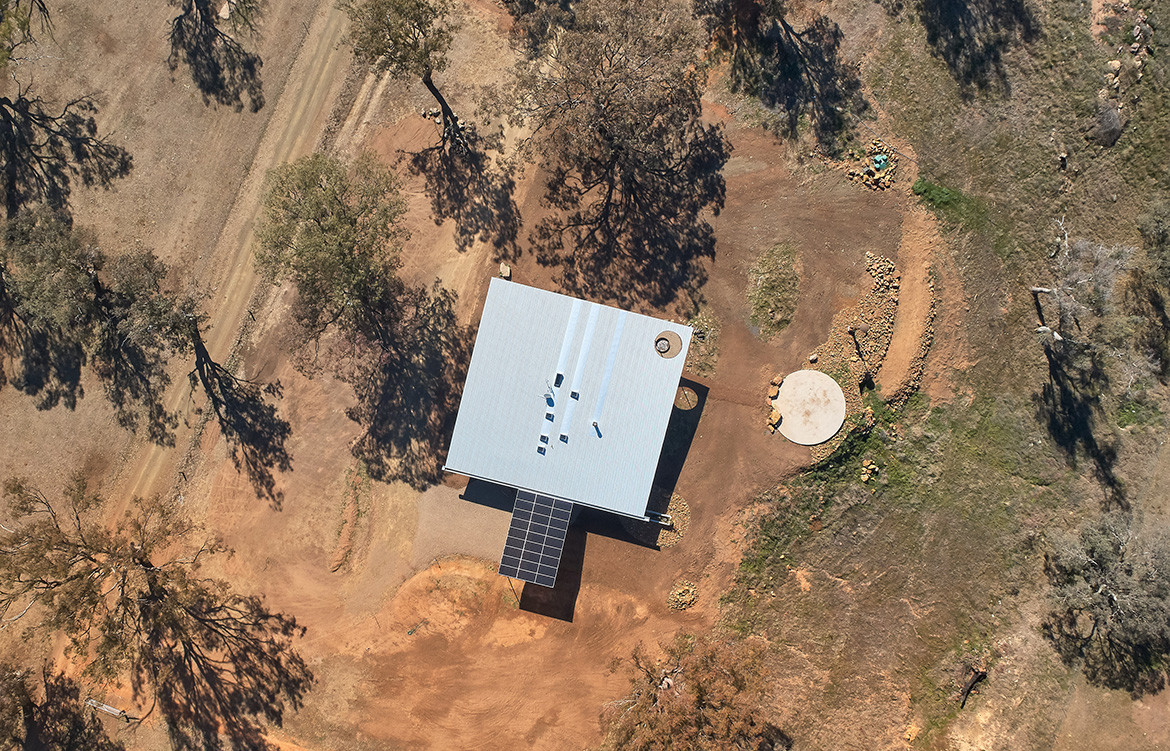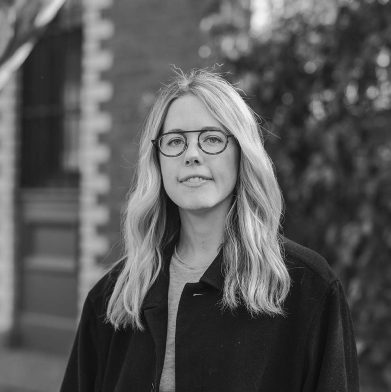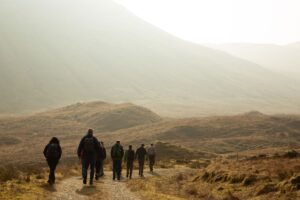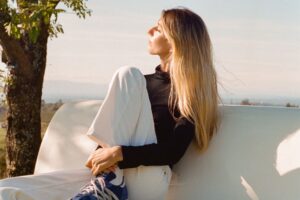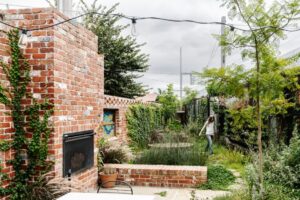Twenty-twenty was an unexpected year and one that has continued throughout much of 2021. Extended lockdowns and a global pandemic have seen many people in Australia, New Zealand and Singapore calling their kitchen table a desk.
In this context, it comes as little surprise that a remote, off-grid home was awarded the Habitus House of the Year in 2020. Upside Down Akubra House by Alexander Symes Architect offers a unique Australian architectural vernacular, but more importantly it shows what’s possible through an utterly sustainable approach.

Located on a 314-hectare site in Nundle, a town approximately 50-kilometres from Tamworth, NSW, this home nestles into the rugged, vast terrain while offering the owners a place of shelter from the extreme environmental conditions.
Alexander recently caught up with the clients of this project to find out how life has been unfolding and how the architecture has performed as a self-sufficient building.
“It was fortuitous that they happened to be at the home when lockdown started and have been able to spend most of 2021 living in there,” says Alexander.
Spending time in the home has allowed the owners to learn about all the different environmental systems that make it off-grid. “Up until recently they have loved hosting family and friends, sharing the knowledge and the stories about the systems in the house, especially for the kids. There’s a really visual element where you can see what generates the electricity and how it powers the lights and the fridge,” shares Alexander.
The design language that forms the basis of the house, what Alexander describes as an “environmental functionalist aesthetic” is about making the services a beautiful part of the architecture, rather than “hiding them away”.

One of the many ways this has been achieved is the experience of catching rain. “When it rains out in the country, it really rains. The single gutter heightens that experience and creates a celebration. It’s something the clients love to witness and connects them in a visceral way to the land and the weather,” says Alexander.
Another element that has really shined through is the curation of the views. “The real brief back when we started the project was about creating a house with 360-degree views and passive solar, which was an incredible challenge. Through the exaggerated roof form, we were able to frame the views to the west and the south. The clients shared with me that the overall curation of those views from inside have come together and sitting in each of the spaces there are different aspects to take in. It’s really rewarding to hear that an idea translates in reality,” shares Alexander.

Upside Down Akubra House has delivered in more ways than one – it not only offers a sustainable approach but has created a home that has kept its owners safe, protected and above all else comfortable.
Alexander Symes Architect
alexandersymes.com.au
Photography by Barton Taylor


